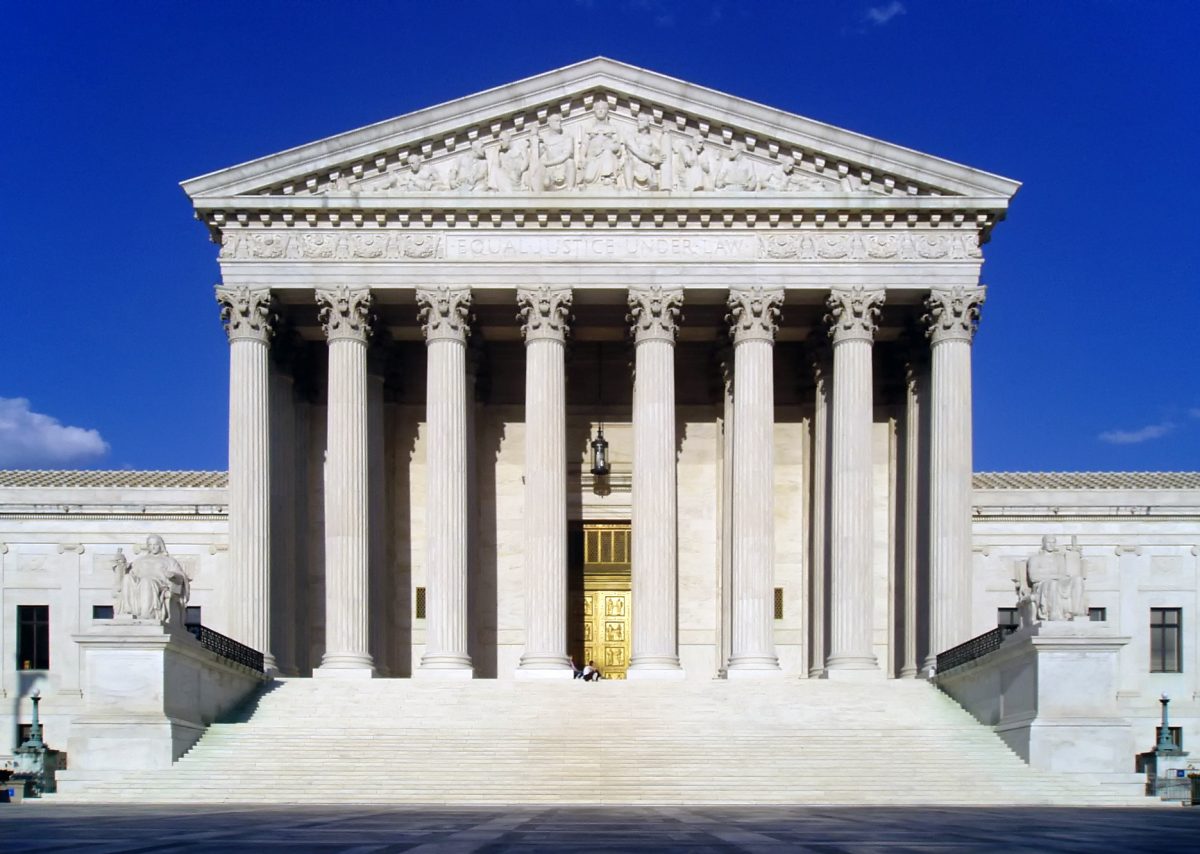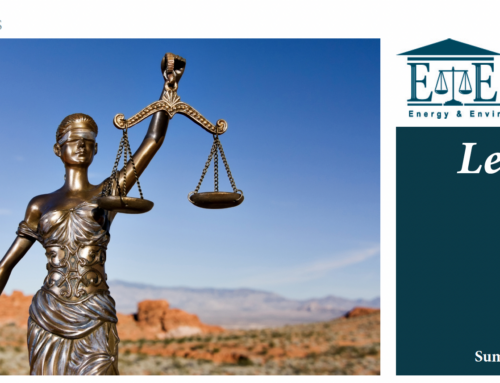by Chaim Mandelbaum
Litigation Manager
On February 9th, 2016 the Supreme Court of the United States issued a stay halting implementation of the Environmental Protection Agency regulations that would lead to the end of coal plants in the United States. The Court in, a 5-4 decision, ordered the EPA rule “Carbon Pollution Emission Guidelines for Existing Stationary Sources: Electric Utility Generating Units” stayed while the legal case against it proceeds in the lower court. It was one of the final acts of Justice Antonin Scalia’s long and distinguished career, as he died the following Saturday.
As we noted in the last edition of E&E Legal Letters, on October 29, 2015, The Energy & Environment Legal Institute (E&E Legal) filed petitions against this EPA regulation, and another regulation limiting new coal power, which together make up the Obama ‘Clean Power Plan’.
E&E Legal acted to oppose these burdensome new restrictions alongside 27 states and 126 other petitioners from across the spectrum, including utilities, unions, and public policy groups. Those opposing the regulation asked the United States Court of Appeals for the District of Columbia to halt the implementation of the rule while the cases against it move forward in the Court. Such a halt was vital since the EPA had imposed swift deadlines on the states to begin coming up with plans for putting this rule into effect. Even though the EPA didn’t finalize and publish the rule until October of 2015, it required states to begin submitting plans to it by September of 2016. States that failed to submit a plan, or didn’t receive an extension approved by the EPA faced the risk that the EPA itself would impose a ‘federal plan’ upon the state, forcing energy producers in the state to conform to whatever rules EPA chooses to impose on them.
The challengers to the rule also asked the Court to grant us an expedited hearing on the rule. This meant that the timetable for filing briefs and arguments on the rule would be compressed so that a decision could be reached more quickly. On January 21, 2016 the D.C. Circuit denied the request for the stay of the rule. It did, however, grant the expedited schedule for the case. The court ordered that oral argument are to be held on June 2nd, 2016.
The challengers to the rule recognized that without the stay, the EPA would continue to press states and utilities to implement this destructive rule at considerable cost. The development of electrical generation facilities and transmission infrastructure takes years of planning and billions of dollars. EPA wants to ensure that those involved committed now to the much more expensive type of plans it wanted to see. That way, no matter the eventual outcome of the case, many companies would be too deeply entrenched in the EPA plan to make any changes. Thus, the challengers chose to apply to the Supreme Court for a stay of the EPA rule.
Five different applications for a stay were sought, two by groups of states, and three by private parties, including one by E&E Legal alongside energy companies and trade associations. Many legal experts across the political spectrum considered the application to the Supreme Court a long-shot, as the D.C Circuit had decided that the situation didn’t meet the “stringent requirements for a stay pending court review.”
Chief Justice Roberts, who oversees such applications when they come from the D.C. Circuit, received the stay applications. He gave the Federal Government a week to respond to the requests. The requests explained why the stay was necessary, showed why the rule was faulty, and why the government was unlikely to prevail. The applications also showed the considerable harms the rule was already imposing, including money that would be wasted if the rule was struck down and the power plants that would have to be closed while the rule was in effect, and thus, might never be reopened even after the courts struck the rule down.
In considering such stay applications, the Court examines four factors. These are: (1) the likelihood that the party seeking the stay will prevail on the merits of the appeal; (2) the likelihood that the moving party will be irreparably harmed absent a stay; (3) the prospect that others will be harmed if the Court grants the stay; and (4) the public interest in granting the stay. A high threshold to meet, which underscores the extraordinary action of the highest Court, as well as a recognition of the extensive damage the Clean Power Plan can do if it’s allowed to proceed as the EPA desires.
The government claimed that such a stay while the rule was under review was virtually unprecedented and that the Court should not get involved. Yet, in the end, the Supreme Court disagreed. Chief Justice Roberts had the option of deciding the case for himself, or referring the case to the entire Court. He chose to allow the entire Court to weigh in, and ultimately the Court, in an Order, on which the four liberal justices dissented, backed the challengers and granted the stay.
Indeed, the Court granted an extremely potent stay, one stronger than the typical stay of an administrative rule. A stay issued by a court usually lasts until a decision on the merits is reached. On the “Clean Power Plan” rule it is the D.C. Circuit which will first decide whether the EPA’s rule is legal. Ordinarily the Circuit would either agree with challengers and strike down the rule, or else reject the challenge and uphold the rule. If it upheld the EPA’s rule, then any stay of the rule would dissolve and the regulation would go into effect.
However that will not happen in this action. The Supreme Court went beyond the eventual decision of the D.C. Circuit. It ordered that the regulation be stayed until the D.C. Circuit issued a decision AND any appeal to the Supreme Court itself was dealt with. Thus, even if the rule is upheld by the D.C. Circuit, challengers including E&E Legal, will have the chance to appeal to the Supreme Court, knowing that the EPA cannot begin enforcing the regulation until the Court decides whether to accept the appeal, and if so, rules on it.
As the case against the EPA’s plan moves forward, challengers have already filed their opening briefs with the D.C. Circuit. The EPA and those who side with it will have a chance to respond and challengers will be able to reply. Oral arguments will then occur in the beginning of June. A decision in the case isn’t likely from the Circuit until the late summer of 2016 at the earliest. What follows from there will be an almost certain appeal to the Supreme Court. This case has been there already, and with 44 states and hundreds of companies involved in America’s critical energy industry lined up on both sides, it is safe to guess that the case will conclude there as well.
This time, however, the Court will have a much different look. The passing of Justice Scalia – a constitutionist who sided with E&E Legal and the other petitioners for a stay – means the court has a vacancy, which has already become mired in politics. The Republicans with their majority in the U.S. Senate are insisting that they will not confirm an Obama appointee, arguing that his successor should have the opportunity given the fact the President is in his final year of office. Time will tell.






